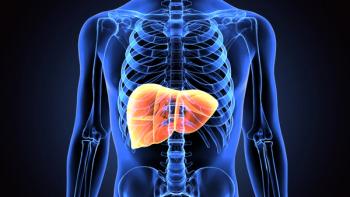
Treatment Improves Outcomes in Patients with Alcohol-Associated Liver Disease
Findings from a retrospective cohort analysis revealed patients with alcohol-associated liver disease diagnosed with and prescribed at least one medication had a decreased risk of mortality.
Alcohol use disorder treatment medications improve outcomes and reduce the risk of mortality in patients with alcohol-associated liver disease (ALD), according to findings from a retrospective cohort study. Presented at the
“Mortality from alcohol and specifically alcohol-associated liver disease has increased dramatically over the past two decades in the United States. However, studies show that many individuals with ALD do not receive any treatment for the alcohol use disorder underlying their ALD,” wrote investigators.1
Treatment for alcohol use disorder varies depending on the individual needs of affected patients, but the main goal of treatment is to stop alcohol use and improve quality of life. Detoxification, psychological counseling, support groups, and oral or injected medications are common treatment options, although referral to an alcohol use disorder treatment professional is recommended.2
To assess the association between alcohol use disorder treatment medications and clinical outcomes in patients with ALD, Elizabeth Harris, M.D., of the department of internal medicine at the University of Kentucky, and colleagues collected electronic health record data for beneficiaries in a nationwide commercial insurance claims and Medicare supplemental database with an index inpatient encounter associated with ALD between Jan. 1, 2009, and June 30, 2019. Beneficiaries were classified into cohorts based on post-index encounter exposure to naltrexone, acamprosate, gabapentin, topiramate, disulfiram, or baclofen.1
Beneficiary data was collected post-index until a gap of 30 days in enrollment, mortality, or the end of available data in June 2020. Investigators propensity-matched beneficiaries with post-index exposure to alcohol use disorder medications in a 1:1 ratio to beneficiaries without exposure based on age, index Charlson Comorbidity Index (CCI), Commercial or Medicare payors, and index diagnoses of alcoholic cirrhosis, alcoholic hepatitis diagnosis, hepatic encephalopathy, and end-stage renal disease.1
According to data presented by Harris at ACG 2023, 40,777 beneficiaries with a code for ALD were identified and 2,932 who received at least one medication for alcohol use disorder following index admission were matched to a control cohort of 2,932 who did not receive alcohol use disorder medication. Among participants who received post-index alcohol use disorder medication, 42% received gabapentin, 14% received naltrexone, 12% received acamprosate, 7% received baclofen, 5% received disulfiram, 4% received topiramate, and 16% received multiple medications.1
In an unadjusted analysis, older age, increased CCI, greater cirrhosis, decreased hepatitis, and elevated hepatic encephalopathy were all associated with an increased risk of mortality. Investigators noted a greater proportion of patients with no mortality (71.16%) had a diagnosis of alcohol abuse at index encounter compared to those with mortality (52.11%). Additionally, being prescribed one or more alcohol use disorder medications was associated with a decreased risk of mortality.1
“This association suggests that patients with ALD benefit from recognition of their alcohol use disorder as a medical problem that also needs treatment. Further studies are warranted to address whether instituting AUD treatment as part of standard of care management of ALD can improve outcomes for this worsening healthcare problem,” investigators concluded.1
References:
1. Harris E, Rhudy C, Aguilar H, Mangino A, et al. Impact of Pharmacologic Treatment for Alcohol Use Disorder on Mortality in Patients with Alcohol-Associated Liver Disease: Analysis From a United States Insurance Claims Database. Paper presented at: ACG 2023 Annual Scientific Meeting. Vancouver, BC, Canada. October 20 – 25, 2023.
2. Mayo Clinic. Alcohol Use Disorder. Diagnosis & Treatment. May 18, 2022. Accessed October 23, 2023.
Newsletter
Get the latest industry news, event updates, and more from Managed healthcare Executive.


















































